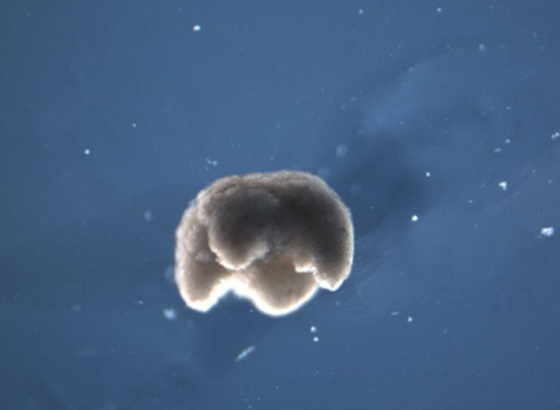Scientists have used bacteria to create a sustainable concrete that is alive, and can even reproduce, an advance that may help reduce the environmental impact of the construction industry. Minerals in the new material are deposited by cyanobacteria, a common class of microbes that capture energy from sunlight through photosynthesis, according to the study published in the journal Matter.
"We already use biological materials in our buildings, like wood, but those materials are no longer alive," said Wil Srubar, an assistant professor at the University of Colorado Boulder in the US. The researchers said their ability to keep the bacteria alive with a high success rate shows that living buildings might not be too far off in the future. Such structures could, one day, heal their own cracks, suck up dangerous toxins from the air or even glow on command, they said.
The team used a 3D sand–hydrogel scaffold that they inoculated with Synechococcus sp. PCC 7002 (Synechococcus) — a photosynthetic cyanobacterium that converts carbon dioxide to sugars during photosynthesis. Cyanobacteria are well known to survive extreme environmental conditions, including high and low temperature, salinity, and humidity, making them ideal candidates for living materials. These new materials are also capable of being regenerated from one parent “brick” using temperature and humidity switches. This corresponds to cycles of incubation at 37 °C, followed by low-temperature storage, where the gelatin matrix solidifies and encapsulates the bacteria.
Splitting one brick in half and extending its shape using additional sand and hydrogel scaffolding, Sruber and his co-workers demonstrated the creation of eight new bricks (three successive generations) from a single parent. According to Sruber, this will no doubt shift the way in which we think about current manufacturing practices and how we re-use materials.
However, a trade-off exists between biological viability and mechanical performance because the gelatin gains its maximal strength when dehydrated and the bacteria requires humidity to function. A balance between these two factors was required for this class of living building material, but the researchers believe that the process could be optimized by exploring the use of additives to enhance bacteria tolerance to dry conditions.
Although this technology is still in its infancy and is not intended to completely replace cement completely, it represents a new frontier in material manufacturing: a new class of responsive materials “in which structural function is complemented by biological functions”.








